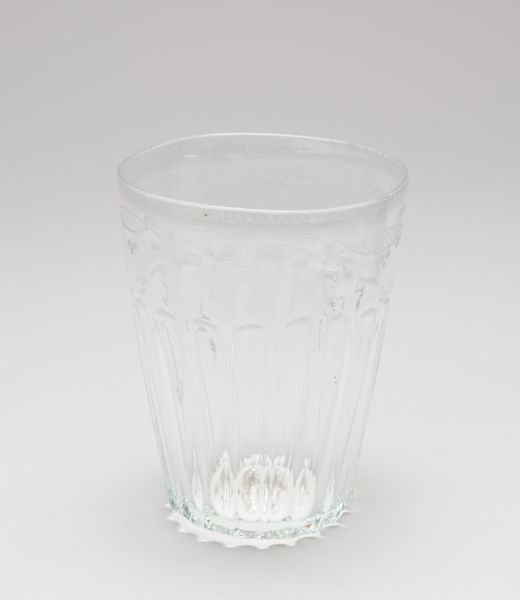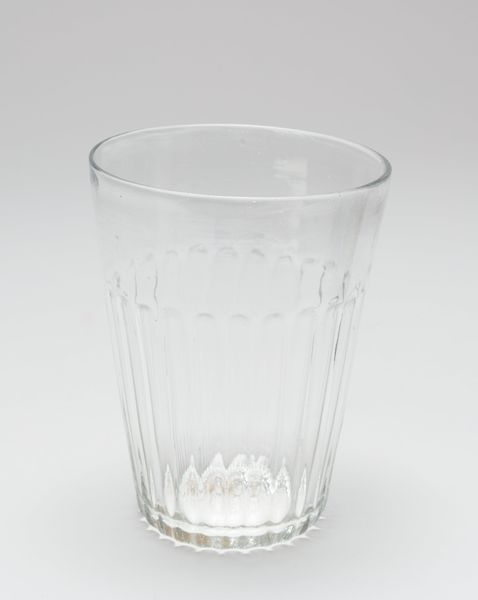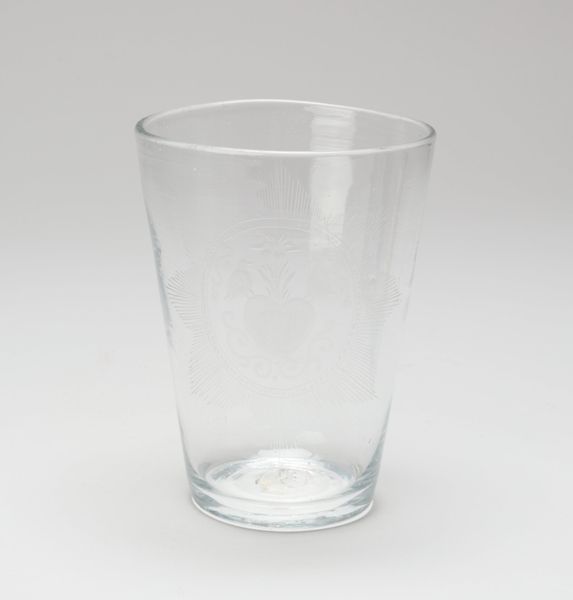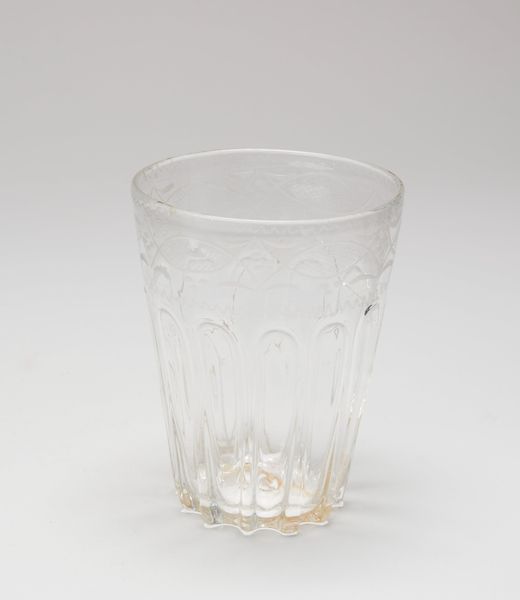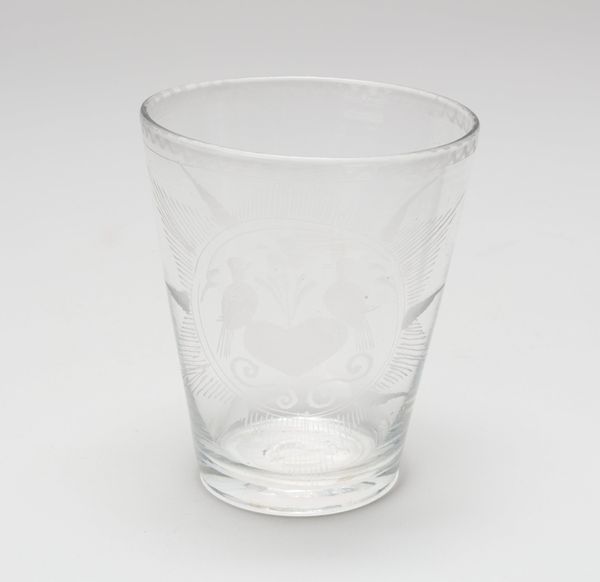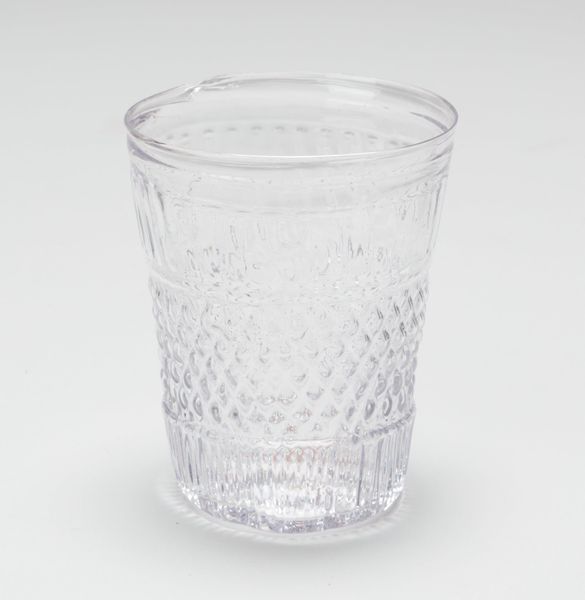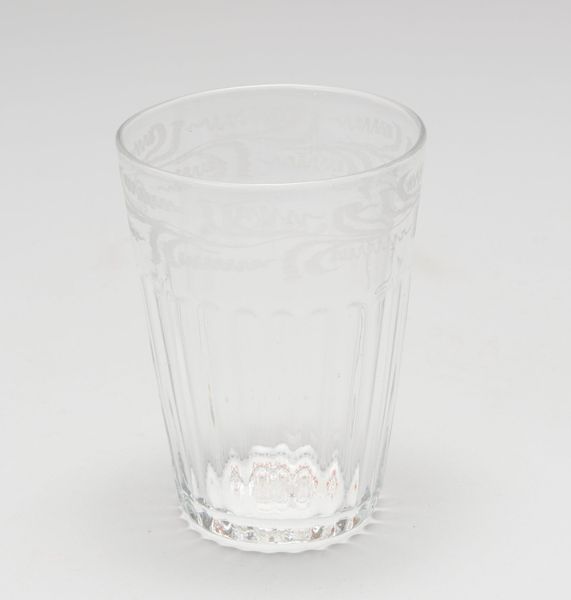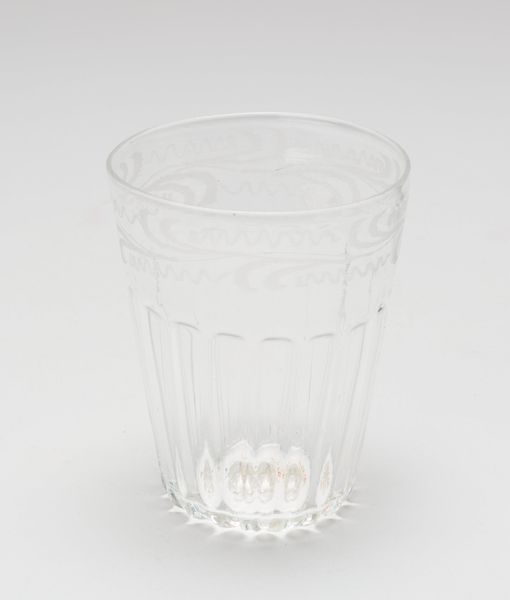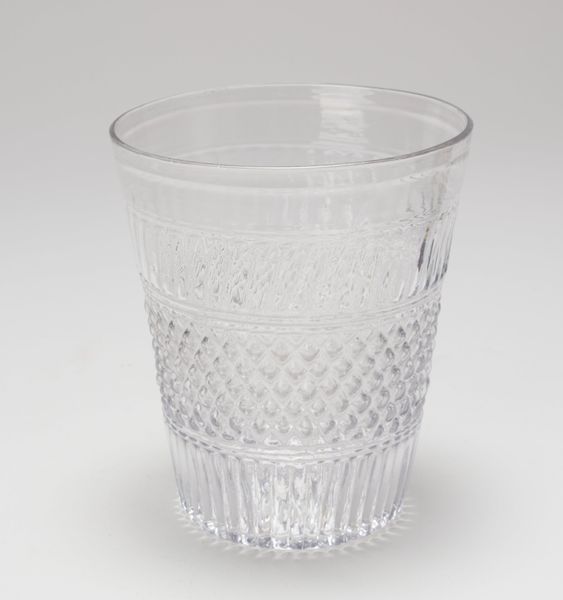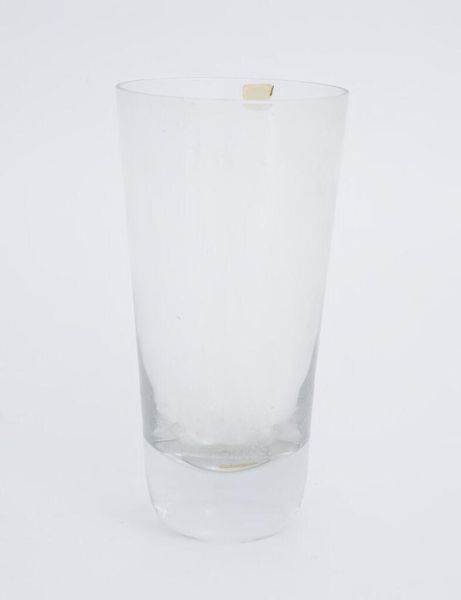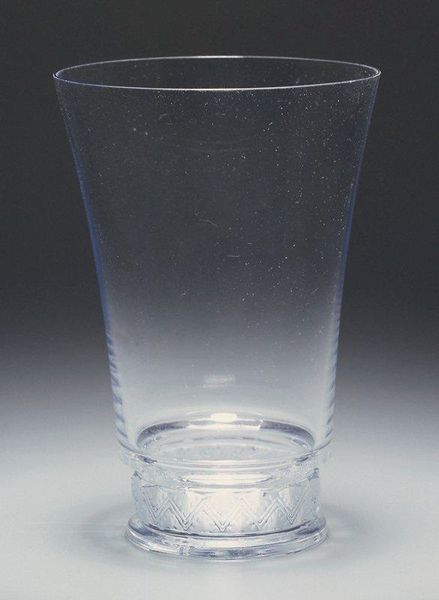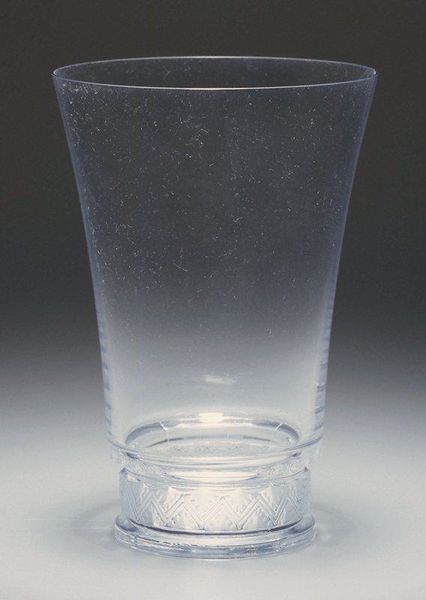
photography, glass
#
photography
#
glass
Dimensions: 6 1/4 x 4 3/4 x 4 3/4in. (15.9 x 12.1 x 12.1cm)
Copyright: Public Domain
Curator: We’re looking at a simple "Water glass," dating back to the 18th or 19th century, currently held at the Minneapolis Institute of Art. The medium is glass. Editor: My initial impression is that it seems simultaneously sturdy and delicate. The etched detailing is fascinating; however, it presents a rather severe elegance, even though it’s a simple drinking vessel. Curator: Consider how seemingly mundane objects like this water glass have, throughout history, reflected social dynamics. Whose table did this adorn? Did it sit amongst opulence, a silent observer to dinner parties, or was it a prized possession for a family with humble means? Its presence transcends mere functionality. Editor: I agree. The glass is quite simple in its shape, almost industrial-looking. And that brings me to thinking about glassmaking processes from that time—the labour and craftsmanship needed to create this particular form. Was it blown, moulded, cut, and what would all this mean regarding labour practices? Curator: Precisely! The act of drinking becomes a ritualistic practice, connected to both privilege and gendered societal norms. Was it for the man or the woman? Editor: And the transparency itself becomes intriguing: the water shows inside, seemingly more pure through it! But I keep pondering its materiality— glass has humble origins and yet can be precious. Was it made of common or higher-quality material? Curator: A piece like this becomes an archaeological artifact through which to consider colonialism and power, especially since luxury wares have played a significant role in shaping global capitalism. Its presence today can offer an exploration into class divisions and social hierarchies of the time. Editor: Absolutely. The etching shows even wear from handling. To consider how this unassuming vessel connects with a narrative encompassing not only consumption but the long processes and cultural conditions required for its mere existence, opens up a really profound discussion. Curator: Absolutely! By deconstructing an everyday artefact, it encourages questions regarding wealth, artistry and history’s role as the lens we now view it through. Editor: Indeed. It's made me question the very substance of this functional artwork that speaks to time, usage and socioeconomic status across time and geography!
Comments
No comments
Be the first to comment and join the conversation on the ultimate creative platform.
